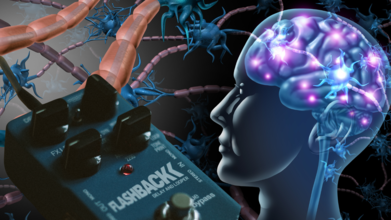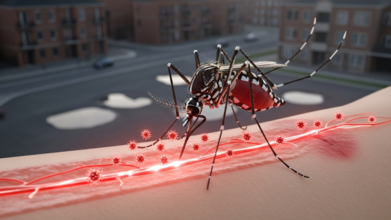- Health Conditions A-Z
- Health & Wellness
- Nutrition
- Fitness
- Health News
- Ayurveda
- Videos
- Medicine A-Z
- Parenting
- Web Stories
A Regular Sleeping Pattern Could Lower Your Risk Of Early Death By 14-34%; How To Create A Consistent Bedtime?

Credits: iStock
When it comes to health, sleep is usually the most overlooked aspect. We tend to focus on diet and exercise while making sleep voluntary. However, new evidence reveals that how we sleep not just for how long can contribute significantly to how long we live.
A new Korean study, appearing in Scientific Reports, has found that sleep duration and regularity are closely linked with all-cause mortality. The research indicates that adults with regular sleep schedules lasting 7 to 8 hours a night have a much lower risk of premature death, while short and long sleep durations are linked with elevated risks.
Sleep is more than just rest; it is a biological reset button. During sleep, our bodies repair tissues, consolidate memory, regulate hormones, and restore energy. The quality, duration, and regularity of this process determine how well our immune, cardiovascular, and metabolic systems function.
Scientists have been aware for years that sleep deprivation is associated with increased risks of hypertension, diabetes, obesity, and heart disease. What's new now is the significance of sleep regularity the predictability of our sleep-wake cycles as a better long-term health predictor than hours of sleep.
The research, which was led by researchers from the Hanyang University Medical Center, tracked over 9,000 Korean adults for 15 years through the Korean Genome Epidemiology Study. They were categorized according to self-reported sleep at night: less than 7 hours, 7–8 hours, and more than 8 hours. They were also divided according to whether they had a regular or irregular sleep schedule. And the findings were dramatic:
Individuals who slept over 8 hours had significantly increased all-cause mortality risk over those in the 7–8-hour category.
Men with normal long sleep (more than 8 hours) and women with irregular long sleep were particularly vulnerable.
There was also an ominous trend towards short sleepers (<7 hours), but this association was not statistically significant.
The greatest risk of mortality was in those who had non-standard short or non-standard long sleep amounts.
Overall, the investigators documented 1,095 deaths and 811 significant cardiovascular events over follow-up. Irregularity in itself increased mortality modestly, but when irregular sleep was combined with too little sleep or excessive sleep, an elevated risk profile resulted.
Sleep Duration: The Sweet Spot for Longevity
The study confirms what a wider meta-analysis of 79 cohort studies has previously indicated as well:
Sleeping less than 7 hours a night increases risk of early death by 14%.
Sleeping 9 or more hours adds 34% to mortality risk.
The sweet spot is still 7–8 hours of sleep, in addition to regularity. Anything short or long of this range can put stress on the body in forms that raise the risk of chronic disease and premature death.
Can Too Much Sleep Can Be Harmful?
Although short sleep is condemned, excessive sleep durations can also indicate underlying illness. Underlying diseases such as undiagnosed sleep apnea, ongoing inflammation, depression, or poorly controlled metabolic conditions may precipitate increased sleep requirements. In these instances, long sleep is a manifestation of underlying illness and not a direct etiological factor. Perhaps the most fascinating feature of the Korean study is the gender difference in how sleeping patterns contribute to mortality.
Men: Long habitual sleep (> 8 hours) and short irregular sleep were both associated with increased mortality. Men are also more likely to have obstructive sleep apnea, which could account for some of the risks.
Women: Irregular long sleep was most dangerous. Researchers propose hormonal changes, psychosocial stress, and caregiving duties might impact women's sleep quality more than men's.
This sex-specific difference highlights the importance of individualized sleep health advice instead of a general set of guidelines.
Sleep risks are differently distributed among different age groups. Middle-aged adults (ages 40–49 years) are more susceptible to the impact of short sleep, which can hasten cardiovascular and metabolic issues. Older adults (older than 60 years) seem more prone to the detrimental effects of long sleep, potentially due to undiagnosed comorbidities.
Why Sleep Regularity is Important?
It's not only the hours you put in—you also have to consider when you sleep and if it's consistent. Circadian rhythm disturbances, including having an irregular bedtime or constantly changing sleep schedules, can affect hormone regulation, blood pressure, and immune function.
This is why even individuals who receive adequate sleep can still be at risk if their rhythms are not regular. Shift workers and airline passengers, for instance, are more likely to develop cardiovascular disease and die, even if they officially meet the number of recommended hours.
How To Build A Consistent Sleep Schedule?
Here's the thing, consistency is the backbone of healthy sleep. Begin by establishing a regular bedtime and wake-up time-even on weekends. Unwind with a calming process: dim the lights, read, or stretch rather than scrolling through your phone. Keep your bedroom cool, dark, and silent to signal sleep. Steer clear of caffeine and heavy meals near bedtime. If sleep doesn't immediately occur, don't try to make it happen—engage in a calming activity until you feel sleepy. With time, these little habits condition the body's internal clock and render sleep easy and minimize long-term health danger. The research identifies an immediate public health warning: defending your sleep is defending your life. Effective tips are:
- Sticking to a regular bedtime and rising time, even on weekends.
- Developing a sleeping environment- dark, cool, and quiet.
- Steering clear of caffeine and screens near bedtime.
- Prioritizing seven to eight hours of nightly sleep as an absolute aspect of health.
Worldwide, sleep disorders fall through the cracks in terms of more visible health threats such as diet and cigarette smoking. But increasing evidence suggests that irregular or low-quality sleep is a quiet killer. Sleep interventions specific to sex, age, and health profiles, the authors of the study note, may be just as critical as individualized diet and exercise routines.
The consequences reach beyond personal decisions. Work culture, city living, and tech habits have undermined good sleep in most societies. Public health policy like delayed school starting times, employee wellness programs, and public awareness campaigns could be key to turning these trends around.
7 Minutes Of Life: The Science Behind What Happens To Your Brain After You Die

Credits: Canva
What happens in the brain at the moment of death has fascinated doctors, philosophers, and ordinary people for centuries. Myths and religious traditions have long spoken of a “life review,” where your past flashes before your eyes. Modern science, for the first time, is beginning to catch glimpses of what really unfolds in the final minutes after the heart stops.
A widely discussed idea is that the brain may continue working for about seven minutes after death, potentially giving rise to vivid flashes of memory and awareness. Recent studies suggest this may not be just folklore.
Recording the Dying Brain
In 2022, doctors in Canada made a startling discovery. They were monitoring an 87-year-old patient with epilepsy when he suddenly suffered cardiac arrest. As his heart stopped, the electroencephalogram (EEG) kept recording his brain activity. What they saw was astonishing: rhythmic brain waves that resembled those seen during memory recall, dreaming, or meditation.
The researchers noted surges in gamma oscillations, which are linked to conscious processing, learning, and memory retrieval. It was as if the man’s brain was playing back moments of his life in a final act of reflection. This provided the first direct evidence that the dying brain may remain active, even organized, after the heart has stopped.
Also Read: What Happens To Human Bodies After Death?
Seven Minutes of Life
The “seven minutes of life” theory emerged from similar findings. When the heart ceases to beat, blood flow to the brain stops, but neurons do not die immediately. Instead, they enter a state of frantic activity as they are starved of oxygen. During this short window, electrical surges ripple across the cortex, creating what some scientists describe as a last burst of consciousness .
Some neurologists believe this window could be responsible for the life-flashing-before-your-eyes phenomenon reported in near-death experiences. Memories may be triggered by abnormal synchronization of neurons, creating vivid, movie-like recollections.
Near-Death Experiences and Life Reviews
The connection between this brain activity and near-death experiences (NDEs) is striking. Studies of cardiac arrest survivors show many report floating above their bodies, seeing tunnels of light, or meeting deceased loved ones. Others describe a panoramic replay of their life events, sometimes accompanied by feelings of peace and detachment.
Dr. Sam Parnia’s large-scale AWARE studies monitored hundreds of patients across multiple hospitals during cardiac arrest. While most did not survive, some who were revived reported precise details of events in the room while they were clinically dead, as well as intense memory flashbacks. These reports align with the idea that the brain, far from shutting down instantly, lingers in a state of heightened, unusual activity.
The Brain’s Last Burst
Neuroscientists suggest that this “last burst” could be explained by the physiology of dying neurons. As oxygen levels plummet, neurotransmitters like glutamate flood the brain. This overstimulates neurons, causing them to fire in abnormal, synchronized ways. Gamma oscillations may peak during this time, briefly sustaining complex conscious experiences.
In animal studies, rats that suffered cardiac arrest showed spikes of coherent brain activity within 30 seconds of death. Human data now confirm similar patterns. Although brief, this activity may be enough to produce vivid subjective experiences.
Consciousness After Death: Science or Spirituality?
These findings raise profound questions. If the brain continues to generate conscious-like activity minutes after death, does this blur the boundary between life and death? Is the “life review” a final, natural brain function, or does it hint at something beyond?
While many scientists caution against overinterpreting the results, others see the possibility of bridging neuroscience and spirituality. The universality of near-death reports across cultures suggests there may be common biological mechanisms at work, yet their meaning remains open to interpretation.
Some traditions describe this as the soul’s transition, while neurologists see it as a natural byproduct of oxygen-starved neurons. Either way, the dying brain appears far from silent.
Redefining Death
Traditionally, death was declared when the heart stopped beating. Today, medicine recognizes that death is a process rather than an instant. Brain activity may persist for minutes, and in rare cases of resuscitation, patients return with memories of those moments. This challenges both how we define death and how long doctors should wait before making the declaration.
Modern guidelines already recommend observing a patient for several minutes after cardiac arrest before pronouncing death. Discoveries about lingering brain activity add further weight to this caution.
75% Of People At Risk Of Diabetes Live With Someone Who Has It, Here's How To Spot The First Symptom

(Credit - Canva)
A new study suggests that the risk for diabetes often exists within entire households. Researchers found that more than three-quarters of people at risk for type 2 diabetes live with at least one other person who either already has diabetes or is at high risk for it.
International Diabetes Federation states that one in nine adults from the ages of 20-79 years are living with diabetes while four out of 10 remain unaware that they have the condition. It is estimated that by 2050, 853 million people globally will have diabetes.
According to the study published in the European Association for the Study of Diabetes, many of these people may not even know they have prediabetes or type 2 diabetes. This finding presents a big opportunity for public health, as identifying and helping these households could have a significant impact.
How Does Diabetes Impact One’s Family?
For the study, researchers looked at the health records of people living in the same homes as a person diagnosed with prediabetes. They found that of the over 356,000 people with prediabetes, more than 75% had at least one other household member with a risk factor for diabetes. The study showed that shared risk factors were found in:
- 65% of adults and 35% of children
- Overweight or obesity was the most common risk factor, found in 55% of adults and 34% of children
- Abnormal blood sugar levels were found in 32% of adults
- The study also revealed that nearly 30,000 adults with full-blown type 2 diabetes were living in the same households as someone with prediabetes.
How To Know You Have Diabetes – Spotting First Symptoms
According to Diabetes UK, if you, or someone you know is showing possible signs of diabetes, it’s important to contact a doctor to be sure. Having some of these symptoms doesn’t automatically mean you have diabetes, but it's always best to get checked out. The most common symptoms of diabetes are:
- Going to the toilet a lot, especially at night.
- Feeling very thirsty.
- Feeling more tired than usual.
- Losing weight without trying to.
- Genital itching or thrush.
- Cuts and wounds that heal slowly.
- Blurred vision.
- Increased hunger.
These symptoms can affect anyone, whether they are an adult or a child. It’s worth noting that some of these symptoms, particularly the "4 Ts" (toilet, thirsty, tired, and thinner), can appear very quickly in people with type 1 diabetes. While you may experience other symptoms, the most common ones are increased thirst, frequent urination, tiredness, and weight loss.
What Causes The Symptoms of Diabetes?
Diabetes symptoms appear because your body isn't using sugar (glucose) for energy properly, so it stays in your blood. To get rid of this extra sugar, your body flushes it out through your urine. This process makes you feel very thirsty and causes you to urinate more often.
The high sugar levels in your urine can also lead to a fungal infection called thrush. However, not everyone with diabetes experiences symptoms. In fact, 6 out of 10 people with type 2 diabetes have no symptoms at all when they are diagnosed.
Can These Risk Factors Help Us Prevent Diabetes?
The study highlights that households often share habits that increase the risk of diabetes, such as eating diets high in sugar and carbohydrates or not getting enough exercise. This also provides a chance for entire households to make healthy changes together.
Based on these findings, researchers suggest that health systems could use this approach to screen for diabetes. By identifying high-risk households, they can create prevention programs and provide resources for everyone in the family, rather than just focusing on one person.
World Mosquito Day 2025: Dengue Transmission Isn’t One-Way, Humans Infect Mosquitoes Too

Credits: Health and me
Dengue has been identified as one of the world's most severe and dangerous mosquito-borne viral disease but here is something that tends to go undetected- the transmission is not only mosquito-to-human, it can also spread the other way, human-to-mosquito. This two-way motion makes dengue particularly difficult to manage, particularly in areas where the disease is already endemic.
The burden of dengue in the world has increased at a rapid rate. In 2000, the World Health Organization (WHO) had reported slightly more than half a million cases. The number had ballooned to 5.2 million in 2019. This worsened in 2023, when the number of dengue cases hit an all-time high of more than 6.5 million in 80 nations, resulting in over 7,300 fatalities.
Much of this growth is caused by climate change, urbanization, and the expansion of Aedes aegypti and Aedes albopictus mosquito populations into new areas. Rising temperatures and heavy precipitation have increased the areas where mosquitoes breed, and vulnerable health systems—overstretched by the COVID-19 pandemic—have found it difficult to control outbreaks.
Currently, dengue is endemic in over 100 nations, predominantly in South-East Asia, the Americas, and the Western Pacific. It is estimated that Asia alone harbors approximately 70 percent of the global burden of the disease.
How Does Mosquito to Human Transmission Take Place?
Historically, dengue has been conceived as a vector-borne infection, wherein the virus gets transmitted to humans by a bite from infected female Aedes mosquitoes. The virus multiplies in the midgut of the mosquito after feeding on a viremic host before getting transported to the salivary glands of the mosquito. This is called the extrinsic incubation period (EIP), and this usually lasts for 8–12 days under conditions of 25–28°C temperature. The mosquito remains infectious for the rest of its life after it becomes infectious.
This process describes how outbreaks can so rapidly spread: once a local population of mosquitoes becomes infected, the disease can persist for months even in the absence of new imports from elsewhere.
How Human-to-Mosquito Transmission Occur?
Recent research points to yet another crucial piece of the puzzle: humans too can pass the dengue virus back to mosquitoes. When a mosquito bites an individual with viremia, the virus in the bloodstream it can itself become infected and keep the cycle going.
Human-to-mosquito transmission can take place before an individual even knows they are ill. Scientists say that the virus is detectable in mosquitoes up to two days prior to the onset of symptoms and up to two days when the fever disappears. This indicates asymptomatic carriers, or those with mild symptoms of illness, can contribute heavily to maintaining outbreaks.
The risk of infection in mosquitoes increases with fever and high viremia in the patient, although intense dengue-specific antibodies seem to lower the risk. The majority of individuals are viremic for 4–5 days but can remain so for as long as 12 days in some instances.
This latent stage of transmission makes dengue controlling particularly challenging. It's not merely about preventing mosquito bites—it's also about comprehending how human beings, even subconsciously, become a link in the chain of transmission.
Identifying Early Warning Symptoms of Dengue among Patients
As per Dr. Anirban Chattopadhyay, Critical Care Specialist with CMRI Kolkata, "Dengue and viral fevers also track the monsoons in Kolkata and other regions of India and extensive and well-reported cases in patients are a routine occurrence. The majority of the viral fevers are mild and self-limited, whereas with dengue the infection could be very swift and severely debilitating if not diagnosed early enough."
The initial signs of dengue can be mistaken for other viral infections—high-grade fever, very severe body pain, headache, nausea, and lethargy. However, dengue tends to add some warning signals like pain in the eyes, rashes on the skin, and reduced platelet levels (thrombocytopenia). Patients might also present with gum bleeding, nosebleeds, or petechiae (small red spots on the skin). These are warning signs that need urgent medical intervention.
Why Early Consultation is Critical?
Prompt diagnosis is best to avoid complications. "Early recognition, and timely treatment remains the best option available currently for lessening the potential morbidity from these illnesses," stresses Dr. Chattopadhyay.
Physicians can diagnose dengue with a routine blood test. Most cases are treated with hydration and supportive care, although delayed treatment heightens the risk of developing severe dengue, such as Dengue Hemorrhagic Fever or Dengue Shock Syndrome—both of which may be fatal.
Additionally, patients are advised not to self-medicate with medications such as ibuprofen or aspirin, since they can aggravate risk of bleeding. Paracetamol is still the best option for the control of fever.
Monitoring and Home Care
Home management is achievable in mild cases with strict monitoring. Patients should monitor temperature, fluids, urine output, and energy status once daily. Rest, hydration, and prompt review by the doctor are necessary. Yet, acute abdominal pain, protracted vomiting, severe exhaustion, lethargy, or shortness of breath indicate the need for emergency hospitalization.
This surveillance method not only enhances personal outcomes but also decreases the chance of unwittingly infecting the virus back to mosquitoes during the viremic phase.
How To Prevent Dengue Transmission?
Prevention of dengue can be ensured through a two-pronged mechanism: prevention of mosquito bites and reduction of opportunities for spreading the virus. On the control of mosquitoes, practices are done such as removal of stagnant water, application of insect repellents, fitting window screens, and community-level vector control programs.
On the human side, education about human-to-mosquito transmission is crucial. Individuals with dengue infection must safeguard themselves from new mosquito bites when in the viremic phase through the use of bed nets, repellents, and protective apparel. In this manner, they minimize the probability of infecting new mosquitoes, which in turn cuts short community transmission.
Dr. Chattopadhyay also reminds us that prevention on a wider level involves healthy overall well-being. Good hand hygiene, wearing masks in crowded public places, and having good immunity through nutrition all lower one's susceptibility to viral infections in general.
With the finding of human-to-mosquito transmission, we are changed in our understanding of dengue control. It's not merely about destroying breeding sites or covering ourselves up from bites—it's also about recognizing that humans are part of the chain of infection.
As Dr. Chattopadhyay indicates, prompt detection and timely treatment are still our best weapons against dengue. Combining that with preventive measures both at the household and community levels—gives us the best hope of lessening the impact of this quick-spreading disease.
© 2024 Bennett, Coleman & Company Limited

